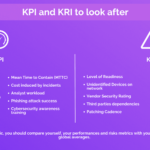The Future of Cybersecurity: Trends Shaping the Digital Landscape
As we advance further into the digital age, cybersecurity remains a paramount concern for individuals, businesses, and governments. With cyber threats becoming more sophisticated and pervasive, understanding the emerging trends that will shape the future of cybersecurity is essential for proactive defense. This article explores key trends that are influencing the cybersecurity landscape and offers insights into how organizations can adapt to these changes.
1. Rise of Artificial Intelligence and Machine Learning
Artificial intelligence (AI) and machine learning (ML) are transforming cybersecurity by enabling faster detection and response to threats. AI algorithms can analyze vast amounts of data in real-time, identifying anomalies that may indicate a security breach. As cybercriminals increasingly employ automated techniques to launch attacks, AI-powered cybersecurity tools will become indispensable for organizations looking to stay ahead of threats. By automating routine security tasks, AI also allows cybersecurity professionals to focus on more complex issues, improving overall efficiency.
2. Zero Trust Architecture
The Zero Trust security model is gaining traction as organizations recognize that traditional perimeter-based defenses are no longer sufficient. In a Zero Trust framework, no one—whether inside or outside the network—is trusted by default. This approach requires continuous verification of user identities and device integrity, regardless of location. Implementing Zero Trust involves adopting multi-factor authentication, identity and access management, and micro-segmentation to minimize the potential impact of a breach. As remote work becomes more common, this model will be crucial for ensuring robust security.
3. Increased Regulation and Compliance Requirements
Governments and regulatory bodies are responding to the rising threat of cybercrime by instituting stricter regulations and compliance requirements. Initiatives like the General Data Protection Regulation (GDPR) and the California Consumer Privacy Act (CCPA) are setting high standards for data protection and privacy. Organizations will need to invest in compliance measures and ensure that their cybersecurity practices align with evolving regulations. Failure to comply can result in severe penalties and damage to reputation, making adherence to regulations a priority for future cybersecurity strategies.
4. Growing Focus on Privacy and Data Protection
As data breaches continue to make headlines, consumers are becoming increasingly concerned about their privacy. Organizations must prioritize data protection by implementing strong security measures and transparent data handling practices. This focus on privacy is driving demand for encryption, data loss prevention tools, and secure data storage solutions. Companies that prioritize privacy will not only enhance their security posture but also build trust with customers, leading to stronger brand loyalty.
5. Supply Chain Security
The interconnected nature of today’s business environment means that vulnerabilities can exist within supply chains, creating significant cybersecurity risks. High-profile incidents, such as the SolarWinds attack, have highlighted the importance of securing third-party vendors and partners. Organizations must adopt a comprehensive approach to supply chain security, including thorough vetting of vendors, continuous monitoring of third-party access, and incident response planning. This trend emphasizes the need for collaboration and information sharing among businesses to bolster collective security efforts.
6. Cybersecurity Skills Gap
The demand for cybersecurity professionals continues to outpace supply, leading to a significant skills gap in the industry. As organizations strive to implement advanced security measures, they face challenges in finding qualified personnel. To address this issue, companies should invest in training and development programs, promote diversity in hiring, and consider alternative talent sources, such as apprenticeships and internships. Bridging the skills gap will be essential for building resilient cybersecurity teams capable of tackling emerging threats.
Conclusion
The future of cybersecurity is being shaped by a confluence of technological advancements, regulatory changes, and evolving threat landscapes. By embracing trends such as AI, Zero Trust architecture, and increased focus on privacy, organizations can enhance their security posture and better protect their assets. As cyber threats continue to evolve, staying informed and adaptable will be crucial for navigating the complexities of the digital landscape. A proactive approach to cybersecurity not only mitigates risks but also fosters trust and resilience in an increasingly interconnected world.


